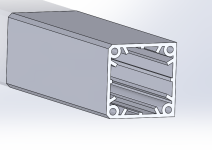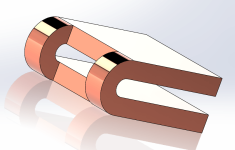Eclectic
1 kW
That's because the standards had been upgraded since Windows 95 to account for new technology. So your argument is that standards don't work if they are not backwards compatible to 20 year old technology even if they are compatible to 10-15 year old standards?r3volved said:This is highly incorrect...go plug in a solid state hard drive into a windows 95 computer and then report back on how connections and protocols have not changed.Eclectic said:2.5" drive are a great example of this. They went from spinning hard platters to all solid state without having to redesign the computers. As long as the "Black Box" (drive) manufacturers kept the form factors and I/O connections and protocols the same, it worked.
Actually, if you look inside of a hard drive, there is smart stuff in there that generate the standard interface between the actual hardware and outside world. The outside world in this case is the hard drive controller. The hard drive controller then has another standard by which it communicates to the operating system. The operating system has another standard that it exposes to the software that runs on the computer. This is the reason that I can build a computer from standard modules and run standard software on it. The standards are always evolving and eventually get depreciated. But it all works because of standards.r3volved said:This is also backwards...Eclectic said:Does it make sense to put the smart bits inside the the box? You bet'cha. Otherwise whenever the technology inside the box changes, you would have to change the interface to it. The idea is to keep the interface simple and standard.
You want your 'common/swap' parts as dumb as possible. THIS is how HDD's work...the brains are not in the HDD, the brains are in the PC in the form of driver commands to interface with the HDD's hardware.
And where would hard drive development be if every time that hard drives improved, you had to design a whole new computer to use it?r3volved said:This is again incorrect in the application of batteries; you MUST increase the size of the container to increase the total number of cells. HDD manufactures have developed alternate methods to maintain form factor while increasing capacity...primarily through laser size.Eclectic said:As far as voltage and capacity are concerned, I will go back to the hard drive example. It doesn't matter what the capacity or how fast the hard drive is as long as the drive controller can find those things out during the discovery process.
r3volved said:A 'smart charger' should be able to interface with a 'smart bms' to establish capacity, chemistry, voltage limits and charge rates. The dumber the battery pack, the easier it is to 'hot swap' with a smart interface...like a computer does...
computer is smart - hardware is dumb
Absolutely... A 'smart charger' should be able to interface with a 'smart bms' but the BMS should know about and manage the battery. That way you don't have to reprogram and redesign the charging/controller systems every time there is a change in battery technology. By having the relatively inexpensive smart BMS manage the dumb hardware, the interface stays the same and you don't have to redo the entire infrastructure every time the technology changes.
I would assume that there might be a need for a couple of standard form factors required (like "AA", "C", "D" cells - those standards have lasted a long time). Standards always evolve over time and eventually become outdated but the modularity creates an environment that makes rapid development much easier.



![T50004S-20HC[1].jpg T50004S-20HC[1].jpg](https://endless-sphere.com/sphere/data/attachments/84/84702-76e7cfd199856bdbd76de7b489c96ee5.jpg)

